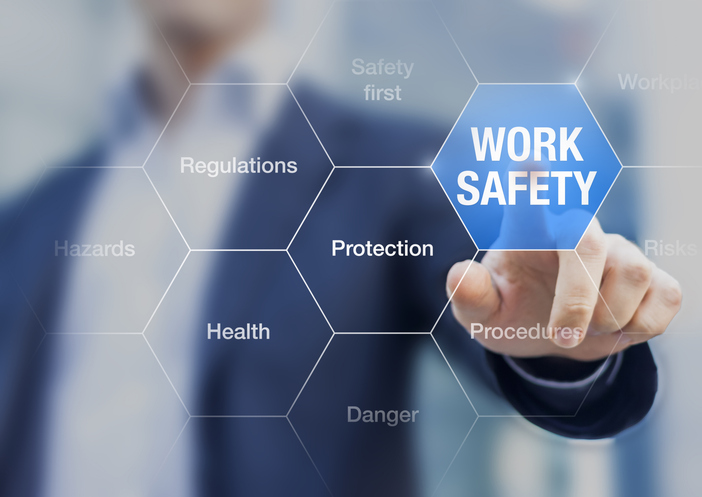Comprehending the Lawful Demands and Ideal Practices for The Golden State Workplace Violence Prevention for Companies
In the realm of California workplace security, comprehending the legal requirements and ideal methods for avoiding violence is critical for companies. As the dynamics of the modern-day office proceed to develop, so do the potential threats associated with office physical violence.
Lawful Framework in The Golden State
These policies call for employers to evaluate and resolve potential office violence dangers via the application of thorough prevention programs. Employers have to create and keep a composed Workplace Physical violence Prevention Strategy that consists of procedures for identifying and examining workplace violence threats, as well as methods for reacting to and exploring cases.
Additionally, The golden state Labor Code section 6400 requireds that companies supply a healthy and safe work environment for all employees. This includes taking steps to avoid work environment violence by executing safety actions, giving training on reacting and recognizing to possible threats, and fostering a society of open communication relating to safety and security problems. Failing to conform with these legal needs can lead to charges and fines for companies, highlighting the importance of focusing on office violence prevention in California.

Threat Analysis and Avoidance Methods
Structure upon the lawful framework developed in The golden state for workplace physical violence avoidance, the emphasis currently moves towards conducting complete threat analyses and carrying out reliable avoidance strategies to secure workers. Risk analysis is an essential action in recognizing potential resources of office violence, including interior problems, consumer disagreements, or external threats. Companies must examine variables such as the nature of the workplace, interactions with the public, and previous incidents to identify the level of danger present. Avoidance methods may consist of applying clear office physical violence plans, supplying training on conflict resolution and de-escalation techniques, developing reporting procedures for worrying actions, and improving physical safety actions. Consistently examining and updating these techniques is vital to adjust to changing circumstances and make certain ongoing security for employees. By proactively evaluating dangers and applying safety nets, employers demonstrate a dedication to producing a safe and secure and risk-free workplace for all staff members (california workplace violence prevention).
Staff Member Training and Education
Just how can employers guarantee a knowledgeable and prepared labor force in the world of office physical violence avoidance? Staff member training and education and learning are extremely important in furnishing personnel with the understanding and abilities essential to recognize, stop, and reply to potential acts of violence in the workplace. Training should incorporate a series of subjects, including recognizing warning indications of prospective violence, de-escalation strategies, reporting treatments, and just how to access support sources.
Employers should perform normal training sessions that are customized to the particular needs and threats of their work environment. It is necessary to involve staff members at all degrees of the organization, from entry-level staff to management, to guarantee thorough understanding and application of violence avoidance procedures. Training should be interactive, interesting employees in practical scenarios and providing them with the chance to practice their action skills.
Moreover, employers must routinely assess and update their training programs to show any kind of adjustments in the office atmosphere or new understandings into reliable violence prevention techniques. By investing in recurring education and training, employers show their commitment to producing a safe and secure and risk-free work atmosphere for all workers.
Reporting and Action Protocols
Efficient workplace physical violence avoidance depends upon the facility of clear and effective coverage and reaction methods within companies. Prompt reporting of any type of concerning actions or incidents is crucial to stop escalation and make certain the safety and security of all employees. Companies have to apply simple reporting treatments that encourage workers to speak up without fear of revenge. This go now includes supplying numerous reporting networks such as hotlines, anonymous coverage systems, or direct interaction with managers or HR.
This includes promptly examining reported events, analyzing the degree of risk, and taking proper activity to attend to the circumstance. Routine training on these reaction protocols is important to make certain all workers are prepared to deal with potential physical violence in the office successfully.
Continuous Compliance and Analysis
To make sure the effectiveness of reporting and feedback procedures in preventing workplace physical violence, recurring compliance and assessment devices need to be established within companies. On a regular basis reviewing and upgrading treatments and policies related to workplace violence prevention is vital to address advancing risks and ensure that workers are properly protected. This process includes conducting periodic threat assessments, examining the performance of existing prevention measures, and making any type of essential modifications to improve security.
Companies ought to additionally provide routine training sessions to inform staff members on recognizing indication of possible violence, reporting procedures, and proper responses to threatening circumstances. Surveillance and assessing employee compliance with these procedures is critical to keeping a safe workplace.
Moreover, companies need to establish clear networks of communication for staff members to report any problems concerning office violence anonymously and without concern of retaliation (california workplace violence prevention). Carrying out comprehensive examinations into reported cases and addressing them without delay and properly is essential in demonstrating a dedication to avoid workplace physical violence and fostering a culture of security and regard within the workplace
Final Thought
Finally, The golden state employers should stick to the legal framework for office violence avoidance, conduct risk analyses, execute avoidance strategies, give training and education and learning to workers, establish reporting and action protocols, and make sure recurring compliance and assessment. By proactively dealing with work environment violence, companies can develop a safe and see post secure and safe work environment for their staff members and minimize potential risks. Compliance with these needs is necessary to promoting a culture of safety and avoiding cases of workplace violence.
As the dynamics of the modern workplace continue to evolve, so do the potential risks linked with workplace physical violence. These policies call for companies to examine and attend to prospective workplace physical violence risks through the implementation of extensive avoidance programs. Companies need to establish and preserve a written Workplace Physical violence Prevention Strategy that consists of procedures for recognizing and reviewing work environment violence dangers, why not find out more as well as protocols for responding to and checking out occurrences.

In final thought, California companies must stick to the lawful framework for office violence avoidance, conduct risk evaluations, apply prevention methods, provide training and education and learning to staff members, develop coverage and action procedures, and make certain continuous conformity and examination.